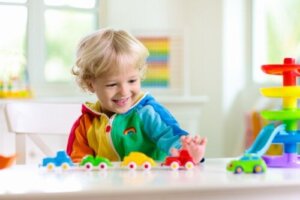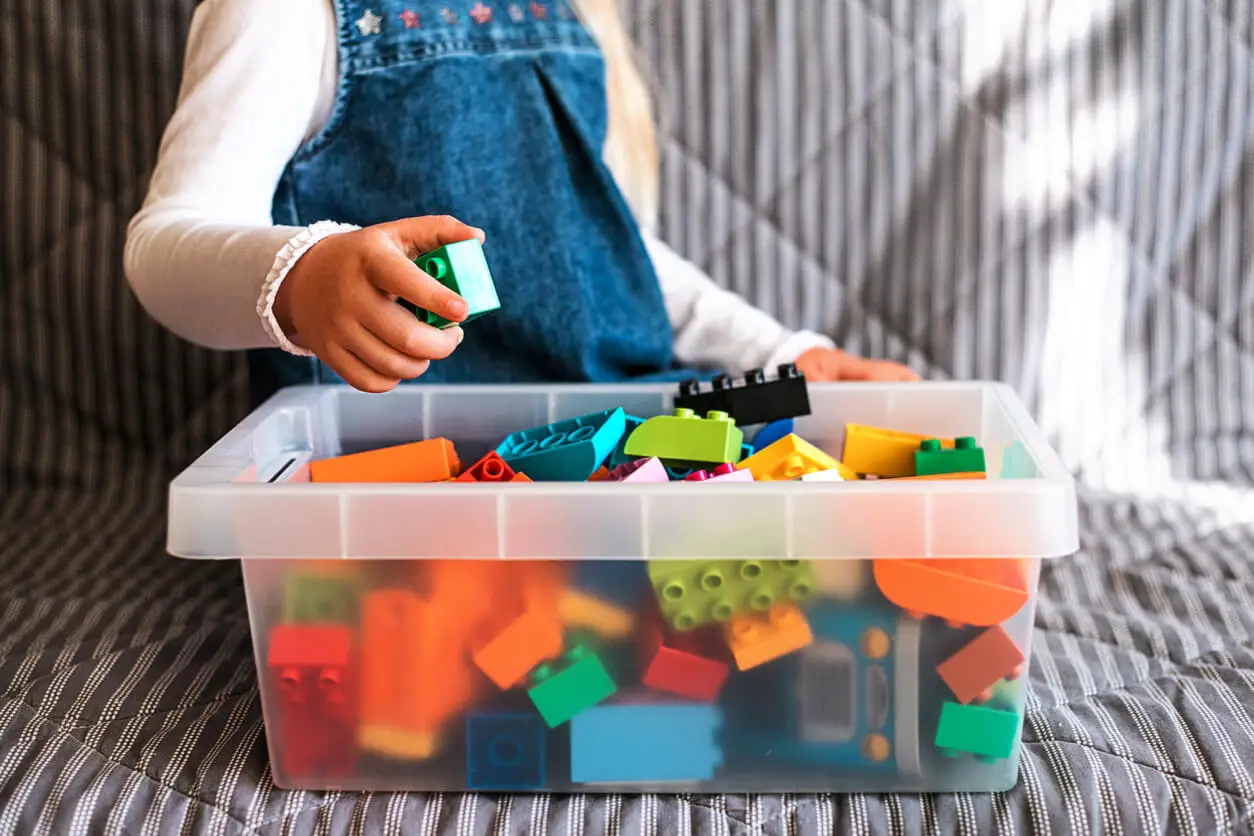What Is Toy Rotation? 5 Tips on How to Do It


Reviewed and approved by the psychologist Elena Sanz
Toy rotation is a practice in which toys are managed and distributed periodically. This allows the child to have partial access to those elements with which he/she plays, facilitating his/her decisions and promoting more order.
This strategy is appropriate for children who have a large number of play elements. Sometimes there are so many that they don’t really enjoy them, or lose interest very quickly. By rotating toys, the child experiences a sense of novelty more often.
Children often lose interest in their toys very quickly. They use them for a while and then find them boring. This leads to new purchases, but does not prevent the cycle from repeating itself. With toy rotation, this situation is handled more intelligently.
Toy rotation: What exactly is it?

Toy rotation is an educational strategy that consists of limiting the number of toys a child has access to during a given period of time. In this way, the aim is for the child to get the most out of his or her playtime.
The University of Toledo conducted a study that shows the importance of toy rotation. The researchers gathered a group of 36 children and took them to play in a room for half an hour. Some of them were given four toys, while others were given 16.
The results showed that the children with fewer toys showed more creativity and concentration, and spent twice as much time looking for new ways to interact with each toy. Meanwhile, children with more play items were more distracted and less entertained during the activity. The conclusion? Often, less is more.
Like this article? We think you may also like to read: How to Create a Craft Space at Home
5 tips for implementing toy rotation
Toy rotation is based on the idea that as the number of toys decreases, attention and capacity for deep play increases. Likewise, it generates greater material and mental order. So, how can you apply this strategy? The following are five tips for doing so.
1. Observe
This first tip is based on Maria Montessori’s guidelines. Within the theory of this great educator, observation is of great importance. The first tip is precisely that: observe before applying the toy rotation.
What should be observed? The toys that most attract the child and those that do not arouse interest. Also, the way the child interacts with his environment and the skills he is developing. This should be noted and will be a solid basis for making the choice of toys.
2. Plan the space
According to the child’s needs and interests, a clean space should be provided for toys. It’s best to first gather all of the child’s play items in one place. Then, it’s best to throw away all those that are incomplete or no longer useful.
It’s also good idea to put aside those toys that the child no longer uses, either because he does not like them or because they are no longer appropriate for his age. Once this is done, the next step is to set aside a specific space for the play elements that the child will have access to. It’s even better if this is divided into compartments.
3. Selection
The third tip for rotating toys is one of the most important. It consists of making a selection of the toys that will be left within the child’s reach. It’s best to classify them by categories: books and stories, building toys, puzzles, movement games, musical instruments, etc.
We think you may also like to read this article: 7 Tips for Raising Stubborn Children
When they’re classified, it’s time to reduce each group to a minimum. How many puzzles will the child really need? How many movement games? It’s best to leave only the ones that the child likes the most or the ones that are most useful in each category. The rest should be kept in an orderly fashion.
4. Present the changes
When everything is sorted, stored, and tidy, it’s time to present the results to the child. It’s a good idea to tell him or her where each of his or her toys is and indicate that once he or she uses them, he or she should put them back in their place.
The toys put away should remain in a place to which the child does not have access. If the child sees them continuously, he or she will have the desire to have them again. If he or she does not see them, they will leave his mind, and when they are presented to the child again, he or she will feel as if he is looking at them for the first time.
5. Create a program
The idea is to create a toy rotation program. That is, define how often a change of play items will be made. This means that the toys that have been left for the little one will be exchanged for some of those that are in storage. That’s what it’s all about.
What is the right frequency? With younger children, it’s best to rotate every month. With older children, every two or three months is best. In any case, you should always observe and take note: if weeks go by without the child using a toy, it may be a good idea to put it in the “put away” box and replace it with another one.
Benefits and recommendations

It’s important for parents to be very flexible when it comes to applying toy rotation. This is not about depriving the child of what he or she likes or forcing him or her to have strict discipline with the game. The goal is to get the most out of it.
If you have to change the selection earlier than planned or reduce the period of change, no problem. Each child sets his or her own pace. What is not advisable is to make changes too often, as this could be counterproductive.
Some of the benefits of rotating toys are as follows:
- It increases concentration.
- It increases the potential for sustained attention.
- Toy rotation encourages imagination.
- It stimulates creativity.
- It provides a sense of novelty, on a regular basis.
- Toy rotation promotes order.
- It facilitates the collection and putting away of toys.
Toy rotation helps the child have a better play experience
Toy rotation is an excellent strategy to help the child have a deeper and more satisfying play experience. Although it may not seem like it at first, it’s more enjoyable for the child than having a few toys available at the same time.
This strategy can be supplemented with a toy exchange once or twice a year. Parents can agree to exchange these play items with other parents, temporarily or permanently. This will increase the sense of novelty.
All cited sources were thoroughly reviewed by our team to ensure their quality, reliability, currency, and validity. The bibliography of this article was considered reliable and of academic or scientific accuracy.
- Spino, C. (2017, 14 diciembre). Fewer toys lead to richer play experiences, UT researchers find | UToledo News. UToledo News | The University of Toledo News. Recuperado 25 de septiembre de 2022, de https://news.utoledo.edu/index.php/12_18_2017/fewer-toys-lead-to-richer-play-experiences-ut-researchers-find.
- Migliorini, L., Cardinali, P., & Rania, N. (2011). La cotidianidad de lo familiar y las habilidades de los niños. Psicoperspectivas, 10(2), 183-201.
- Ramos, Y. H. T., Villena, V. R., & Fernández, S. F. T. (2016). Los juguetes como medio de desarrollo del niño de la primera infancia. Atenas, 1(33).
This text is provided for informational purposes only and does not replace consultation with a professional. If in doubt, consult your specialist.








